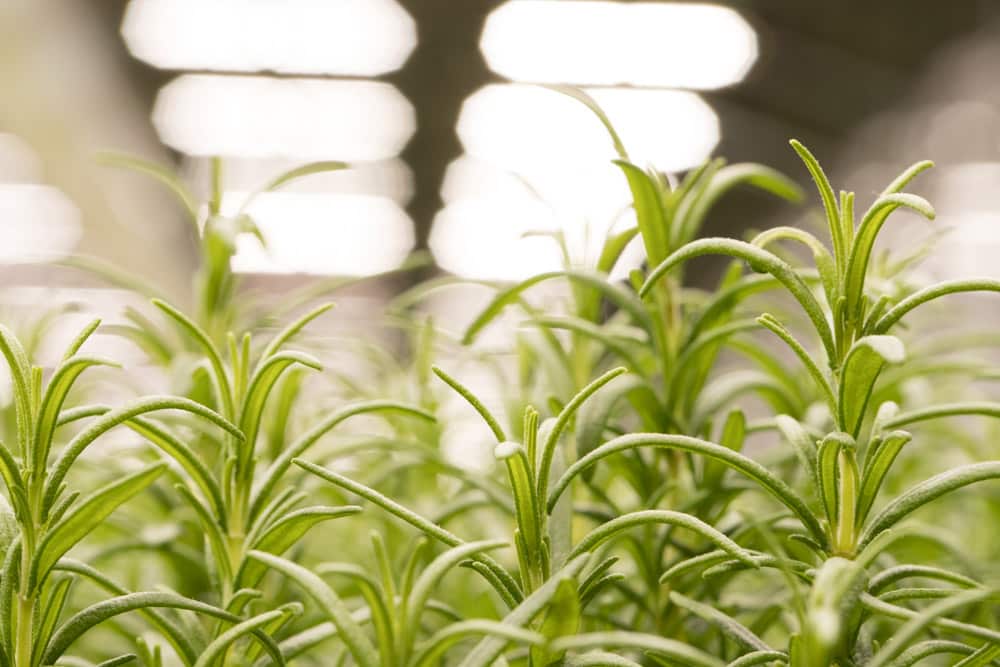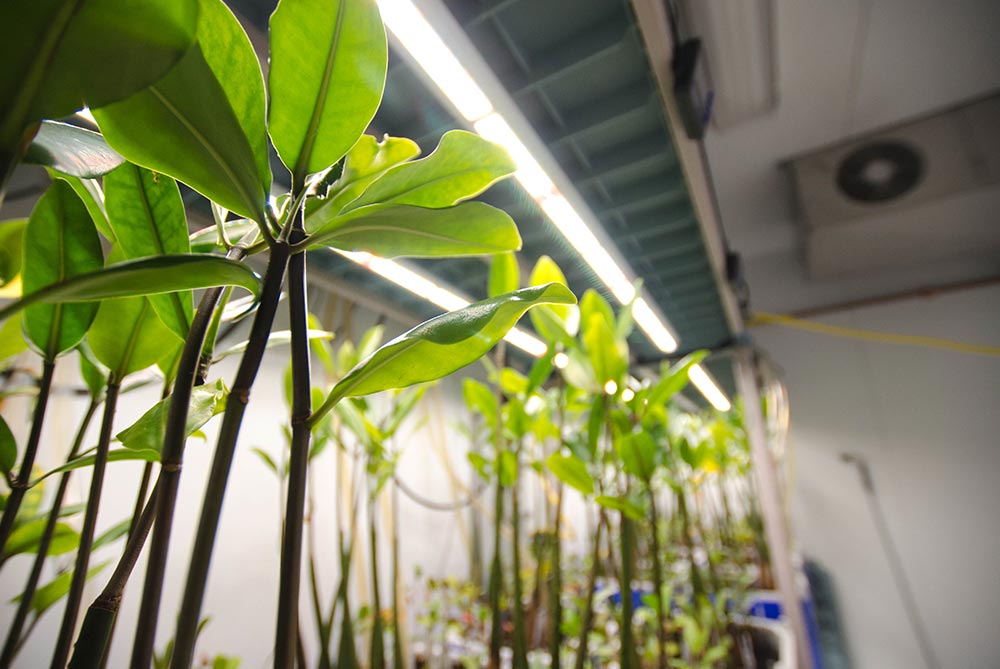Fluence takes a closer look at light’s role in influencing plant development, and what precisely green light does to plants.

The following is an article produced by a contributing author. Growers Network does not endorse nor evaluate the claims of our contributors, nor do they influence our editorial process. We thank our contributors for their time and effort so we can continue our exclusive Growers Spotlight service.
Disclaimer
This article was originally published by Fluence Bioengineering. If you would like to read the original article, please click here.
Absorption Spectrum vs Action Spectrum
When most people think about using LEDs in horticulture lighting, the first thing that comes to mind is the purple glow being emitted from a fixture consisting of red and blue diodes. This purple glow may be the industry standard for horticulture LEDs, but have you ever wondered why red and blue diodes have historically been the semiconductors of choice by lighting manufacturers? Many manufacturers reference the absorption spectra of Chlorophyll A and B (which peak in the blue and red regions of the electromagnetic spectrum) as the main reason for providing a purple spectrum (Figure 1).

At first glance, it makes sense to use red and blue light only, since chlorophyll drives photosynthesis.
But have you considered how the absorption spectrum of chlorophyll is measured? And have you considered whether chlorophyll directly correlates to plant growth, or indirectly? And finally, what happens if you only target a sole pigment and neglect other pigments responsible for plant growth and development? This article will discuss the differences between absorption spectrum and action spectrum, and (spoiler alert) dispel the myth that “plants don’t utilize green light” to promote plant growth and development.

Action Spectrum
The action spectrum of photosynthesis was created from research that was performed in the 1970s by Drs. McCree and Inada and this work was fundamental in defining the range of photosynthetically active radiation (PAR). Prior to this research, very little work had been performed to determine how varying wavelengths of light influenced photosynthesis and plant growth. These researchers utilized filters to determine the influence of light spectra on photosynthesis of single leaves using an assimilation chamber. If you see figure 2, you will notice that plants do in fact utilize green light for photosynthesis, and rather efficiently too (figure 2).

The next logical question to ask is why is there such a difference between the absorption spectrum and the action spectrum if chlorophyll is responsible for photosynthesis? The answer is simple: Chlorophylls are not the only photoreceptors that are responsible for photosynthesis. There are other types of antenna photoreceptors (mainly carotenoids) which also promote photosynthesis, and by utilizing narrow band red/blue LEDs in single-source lighting conditions these pigments are not able to optimize their light harvesting capabilities. Also, it should be noted that green light does in fact promote photosynthesis in chlorophylls. Recent work has shown that green light is able to penetrate deeper into leaf surfaces to drive photosynthesis in chloroplasts located towards the bottom surface of the leaf. As PPFD increases, light energy that is absorbed in the upper chloroplasts tends to be dissipated as heat, while penetrating green light increases photosynthesis by exciting chloroplasts located deep in the mesophyll (Terashima et. al., 2009). Additionally, green light penetrates through leaf surfaces much better than red or blue light to reach the lower canopy, which is extremely important in dense canopy production techniques which are common in controlled environment agriculture.
Conclusion
So, what does this all mean for the grower? While we are still in the early-stages of understanding how plants use light and we are still working to understand how different photoreceptors function and interact with one another, the bottom line is that plants absolutely do utilize green light. If your horticulture lighting system is delivering a spectrum which neglects photoreceptors that absorb light in the 500-600 nm region (especially in sole-source lighting applications) you will not be optimizing your growing environment. If you would like to learn more about the spectra that Fluence Bioengineering includes in their lighting fixtures, click here.

10 Best Gift Ideas for Cannabis Connoisseurs and Growing Aficionados (2022)
December 7, 2022Developing and Optimizing a Cannabis Cultivation System
December 14, 2021Dealing with Insomnia: How Can CBD Help?
December 10, 2020Your Guide to Sleep and CBD
December 7, 2020
Do you want to receive the next Grower's Spotlight as soon as it's available? Sign up below!
Resources:
Want to get in touch with Fluence? They can be reached via the following methods:
- Website: https://fluence.science/
- Email: info@fluencebioengineering.com
- Phone: 512-212-4544

Do you have any questions or comments?

About the Author
Fluence Bioengineering creates the most powerful and energy-efficient LED lighting solutions for commercial crop production and research applications. Fluence is the leading LED lighting supplier in the global cannabis market and is committed to solving the looming food crisis by enabling more efficient crop production with the world’s top vertical farming and greenhouse produce growers. All Fluence lighting solutions are designed and built at the company’s headquarters in Austin, TX, USA, with European sales and support based in Amsterdam, Netherlands. https://fluence.science.